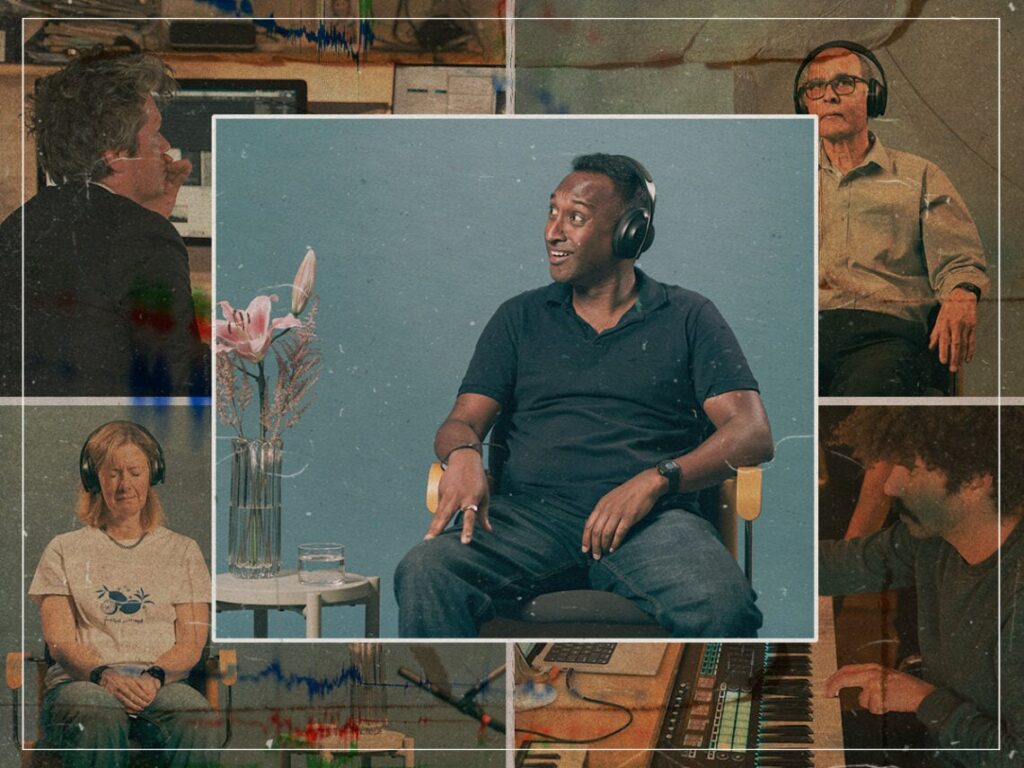‘Tremors vs Tremors’: the project that made music out of Parkinson’s disease
 Posted On
Posted On
(Credits: Far Out / University College London)
Anybody who has followed the stories of beloved entertainers Michael J. Fox and Billy Connolly will understand the implications of Parkinson’s disease. While not directly lethal, the disease is impossible to cure, with a variety of symptoms that tend to worsen over time. Most cases are identified by body tremors and inhibited mobility.
The core symptoms of Parkinson’s disease will often lead to secondary ailments, such as physical injuries from falls, sleep deprivation, and associative depression and anxiety. The last of these secondary symptoms is frequently overlooked, meaning awareness-raising initiatives like ‘Tremors vs Tremors’ are invaluable.
Conducted by University College London in association with creative agency Innocean Berlin and audio production company DaHouse, ‘Tremors vs Tremors’ seeks to raise awareness of the variability in Parkinson’s and highlight the importance of a holistic approach to managing symptoms. As the project leader, neurologist Dr. Christian Lambert, notes, “In managing Parkinson’s, it’s not all about medications.”
More than ten million people worldwide currently live with Parkinson’s, with this figure expected to double over the next two decades. As we endeavour to provide medical and emotional support to those adapting to life with the disorder, it is vital that we understand just how far an attentive ear, a warm smile or a therapeutic musical composition can go.
With this in mind, Dr. Lambert and his fellow researchers decided to mark Brain Awareness Week 2024 by creating cathartic music using Parkinson’s tremors, forcing the serpent to bite its own tail. The team began by interviewing five patients to examine their unique experiences of the condition. He also documented each patient’s relationship with music and their favoured genres.

“We decided to take the tremors as a medium to highlight how Parkinson’s is unique to each person who has it, affecting them in both visible and hidden ways, and that a broad, holistic approach to treatment is required that is tailored to each individual,” Dr. Lambert tells me of the inspiration behind the project.
Next, they recorded the patients’ tremors using accelerometers during a standard assessment. “We recorded the movement of individual tremors through multiple axes,” Dr. Lambert explains. “This raw data was then sent to our partners at DaHouse Berlin, where they transformed it into a one-dimensional sound wave using customised audio software. The result was five unique tremor frequencies that were used to affect the instruments and melodies of the bespoke songs.”
With a unique musical signature at the core of the five compositions, DaHouse enhanced the personal resonance using Dr. Lambert’s interview results. “Each track was enriched with the genre and personal musical preferences, and the lyrics told individual stories of the participants,” he adds.
This week, ‘Tremors vs Tremors’ has published the five songs in an EP across major streaming platforms. Each participant is credited by their first name on the release. Kuhan, whose personalised song is titled ‘The Greatest Day’, notes the profound emotive power of music. “I feel a physical change in my symptoms when I have an emotional reaction to things,” he says. “And there’s nothing more emotional than music that’s based on me.”
The holistic methods of treatment for Parkinson’s disorder are apt to help anybody struggling with mental health concerns, severe and minor. “We all use music to help lift us up or alter our mood,” Dr. Lambert explains. “Anyone with a tremor will tell you that if they are stressed, anxious or under pressure, their tremor is worse. In Parkinson’s, one of the more frequent non-motor symptoms is anxiety and/or depression because the condition affects areas of the brain that help regulate mood.”
“We haven’t done measures to tell you how effective it is, as the project aimed to highlight this link between mood, music and movements,” he concedes. However, physical exercise is one of the most effective forms of treatment for Parkinson’s and many other mental health disorders. “Staying active is really important to help slow progression in Parkinson’s, and there is a range of activities people use such as exercise, dancing, and singing where music forms a key part of the backdrop. What is most important, in my opinion, is finding the activities best that suit each individual,” Dr. Lambert concludes.
You can listen to the five unique songs below. Streaming royalties from the EP will be donated to Parkinson’s UK. The entire project is documented on the ‘Tremors vs Tremors’ website, which tells each participant’s story and explains the process in more depth.


